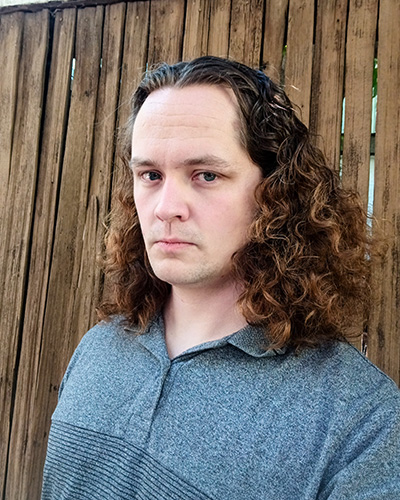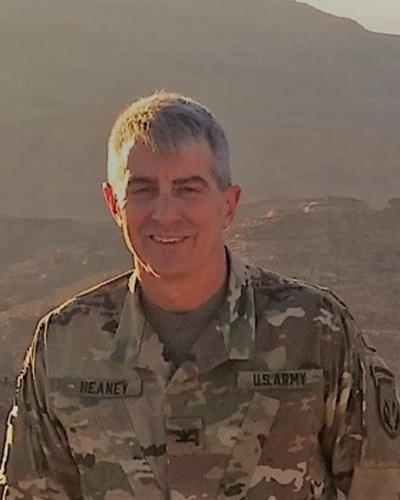The UW has a long history of educating veterans, active duty military and military dependent students. In ME, we are honored to educate service members, whether they come to the UW from a military position or serve after graduating.
Here we highlight the experiences and insights of an alum who served in the U.S. Marine Corps prior to the UW, and an alum who served in the U.S. Army Special Forces and is currently a military civilian.
Jon Freeman, BSME ’21, engineer at Senior Aerospace SSP

Jon Freeman
Tell us about your military service and your specialty.
I was in the U.S. Marine Corps for a little over seven years as a CBRN (chemical, biological, radiological and nuclear) defense specialist. I taught marines and sailors how to use their personal protective equipment, estimated hazard zones on maps, learned what substances neutralize hazardous materials, used decontamination equipment and performed other tasks to aid commanders. If an attack occurred, my role was to help commanders make the correct decision. I worked on California military bases for the majority of my years, and went on a Marine Expeditionary Unit to close out my military service.
Why did you decide to pursue ME?
Before joining the military, I’d wanted to go into engineering. I left the Marine Corps and started researching schools. What led me to the UW was the Formula Motorsports student team. When I was a kid, I went to a couple racing events and was interested in how vehicles can produce so much speed and precision maneuvers and not break. My goal became getting good grades at Seattle Central College and North Seattle College, then transferring to the UW so that I could be part of Formula.
What were your experiences like at the UW?
Getting real-time engineering experience and applying what I learned through Formula Motorsports and in classes was invaluable. During my first year, I was on the electric powertrain (eTrain) team, working on developing and integrating the inverter packaging into the chassis of the vehicle. From my second to third year, I worked on the drivetrain team, assisting in designing a compound planetary gearbox and other components in the drivetrain system. During this year the team made a decision to do four-wheel drive for the first time, so it was challenging to find a new solution. For my capstone project, I was part of a team developing titanium additive uprights, a suspension component that keeps the wheel upright and houses the gearbox and output bearings. I am immensely proud of the drivetrain team these past couple years for getting four-wheel drive working and competing with the titanium suspension uprights.
What was the transition like from serving in the military to being a student?
It was stressful, but the GI Bill and the military’s housing allowances make it easier. Once you start talking to other students and joining study groups, you’re well on your way to succeeding. It’s important to have a good community around you. I can’t remember a class where I didn’t have a Formula buddy. The programming platform MATLAB was tough to wrap my head around, but people recommended taking a Finite Element Analysis (FEA) class to better understand MATLAB. They were right — it worked.
Tell me about your career path after the UW.
After graduating, I found a full-time mechanical design engineer position at Motiv Space Systems, which designs and builds robotic arms for applications in hazardous environments, mostly in space. I worked on range of motion planning for a robotic arm, made vibration plates and conducted actuator testing that would assist in deploying a robotic arm. I also helped design, build and test a prototype lunar terrain wheel actuator. What I’d learned in Formula applied greatly to that project. Motiv’s engineers and technicians helped mentor me, and the abundance of diverse projects taught me about problem solving, modeling, testing and producing flight-quality drawings for parts and assemblies.
Then, I looked for a role to expand my knowledge of analysis and FEA — a computer-aided way to estimate how a design performs under approximations of real-world conditions. As a FEA engineer at Senior Aerospace SSP, a flexible ducting factory for commercial and military aircraft, I have been learning about pressure vessels, flow and heat transfer. Ducting helps air and fluids distribute throughout the aircraft. I like that my role allows me to gain more experience with fluids through learning about pressurization and internal air flow systems. It's important to me to continue to learn outside of college.
Dennis Heaney, BSME ’85, U.S. Army (retired)

Dennis Heaney
Why did you decide to pursue ME?
I earned a degree in economics, but I decided to further pursue an engineering degree because I thought it would be more applicable to what I wanted to do, which was combine science with problem solving. What attracted me to mechanical engineering was dealing with machines and systems. I enjoyed taking classes related to systems and dynamics. From ME professors like Fred Forster I learned to apply math and physics to systems to model harmonics and resonance.
Tell us about your career path after graduation.
After graduating, I worked in Boeing’s commercial airplane division. My job was to design and test electronic controls for propulsion systems. At the time, Boeing was transitioning from hydromechanical controls to full electronic controls for engines — which meant less wait and more responsiveness, but the new controls also created some stability challenges.
In 1990 soon after Iraq invaded Kuwait I joined the U.S. Army. After a short period of enlisted time, I became an officer after graduating from Officer Candidate School. I served for 30 years in the military, spending 24 of those years as an Army Special Forces Green Beret officer.
What was it like being in the Special Forces?
In the Special Forces, my first extended deployment was to Bosnia Herzegovina, where my team advised a Russian peacekeeping airborne brigade and served as a liaison between NATO forces and the Russians.
During my military career in Special Forces I deployed throughout Asia and to combat in Afghanistan and Iraq. I also served as an advisor for a year to the Jordanian Special Forces working on Jordanian bases and out of the US Embassy in Amman. Overcoming the language barriers and cultural differences was a challenging but rewarding experience.
In my last assignment in the Special Forces I served as the Chief of Staff for Special Operations Command Pacific in Hawaii with a mission focus on the Asia Pacific area.
It was a great career which afforded the chance to travel to and live in many unique places. I was able to apply analytical skills and problem solving when planning missions which derived from my engineering education and experience. I was very fortunate to work with quality people in austere environments serving the country in challenging times.
How have you stayed engaged with ME?
I reconnected with the department last year when I was invited to share my career path and
military background as part of ME’s Leadership Seminar Series. After 30 years, it was amazing
to visit campus again and see the research happening in the labs.
During my talk, I encouraged students to learn about the organization that they’re joining — whether it’s a company, an academic institution or a branch of the military, including people’s roles and how they fit within the organizational hierarchy. In the military, you focus on the chain of command and how you’re going to accomplish the mission. ME provided a great background on how to break down a problem and work to an achievable solution. The quality of instruction and professors at the UW was outstanding, and it was a great learning experience.
Originally published November 6, 2023